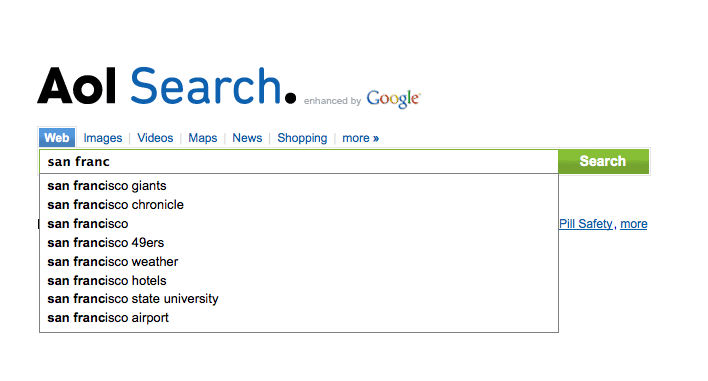In the vast digital ecosystem, not all content is created equal. While much of it serves the purpose of informing, entertaining, or promoting, only a small fraction manages to transcend its initial intent and become genuinely “linkable.”
Linkable content is not merely well-written or visually appealing. It possesses a magnetism that compels others to reference it, share it, and ultimately link back to it. The question many content creators and SEO strategists grapple with is: how do you create content that earns those organic backlinks without begging, bartering, or cold-emailing?
At its core, linkable content fulfills a need—whether informational, emotional, or practical—so effectively that it becomes a resource worth citing. This type of content often finds its place on blogs, forums, social media, and industry publications because it stands out as authoritative, comprehensive, and trustworthy. And in a landscape dominated by algorithms and fleeting attention spans, this combination is pure gold.
The Psychology Behind Linking Behavior
To create content that attracts backlinks naturally, it’s crucial to understand why people link to certain pieces of content in the first place. Most links are not given out of generosity but out of necessity. Writers, marketers, and researchers link when they want to:
- Back up a claim or statistic with a credible source
- Offer their readers further reading without having to explain everything from scratch
- Reference an authoritative opinion or study to reinforce their argument
- Demonstrate transparency by acknowledging original sources or inspirations
Understanding this behavior allows you to reverse-engineer your content. Ask yourself: does my content answer a question in a way others haven’t? Does it present data, insights, or perspectives that others in my niche would find too valuable to ignore?
Data-Driven and Research-Based Content
Few formats are more inherently linkable than content grounded in original data. Whether it’s a survey, a case study, a trend analysis, or a statistical breakdown, original research positions you as a source. And being a source makes your content irresistible for journalists, bloggers, and industry professionals who need to cite facts.
If you lack the resources for large-scale studies, consider smaller but relevant data projects. Even a well-designed internal audit or customer feedback analysis can yield insights that others in your field haven’t yet published. Visualizing this data through charts, infographics, and interactive widgets adds another layer of appeal, increasing the chance of shares and backlinks.
Evergreen Content vs. Timely Topics
Another key to crafting linkable content lies in choosing the right timing. Evergreen content, which remains relevant regardless of season or current events, has long-term value and is more likely to be linked to over time. Examples include how-to guides, tutorials, glossaries, and best-practice compilations.
Conversely, timely content—though short-lived—can generate a surge of backlinks in a short time if it rides the wave of a trending topic or current event. The ideal strategy is a blend of both: a foundation of evergreen content to attract links gradually, supported by periodic bursts of timely articles that capitalize on what’s hot right now.
Making It Visual, Scannable, and Shareable
Today’s web users skim before they read. If your content is dense, unstructured, or lacks visual support, it won’t retain attention—let alone earn links. Structuring content with clear headings, short paragraphs, and supporting visuals makes it more consumable and thus more shareable.
Visual content, in particular, is highly linkable. Infographics, comparison charts, and custom illustrations are frequently embedded in other people’s blog posts, often with an accompanying backlink to the original source. Even if you’re producing written content, adding original visuals dramatically increases your chances of being cited.
Authority and Trust: The Foundation of Link Worthiness
Linkable content must radiate credibility. This means meticulous research, proper citations, and expert insights. But it also means writing with clarity, confidence, and coherence. Authority is not just about who you are—it’s also about how you communicate.
Including expert quotes, case studies, or interviews in your articles amplifies trust. When people see familiar names, respected companies, or well-documented examples, they’re more inclined to share or cite your work. Additionally, transparent methodology in data-based content—explaining how you gathered and analyzed information—builds trust in your conclusions.
Unique Angles and Storytelling
A powerful way to make your content linkable is by telling stories others can’t. Maybe you have a unique experience, a customer success narrative, or an insider’s view of your industry that no one else has shared. These authentic angles captivate readers and invite engagement.
Tying your insights into a broader narrative also helps. People remember stories more than facts. If you can frame a technical or abstract subject within a compelling real-world context, your content becomes both more engaging and more reference-worthy.
Interactive Tools and Templates
Tools and resources that offer practical value tend to attract a steady stream of backlinks. These might include calculators, checklists, spreadsheets, or design templates tailored to your industry. Because they solve a specific problem or simplify a task, people naturally link to them as a favor to their audience.
You don’t need to build an app to benefit from this strategy. Even a downloadable PDF template or Google Sheet that addresses a common pain point in your niche can act as a backlink magnet. Just make sure it’s easy to access and visually appealing.
Emotional Triggers and Controversy
Content that sparks emotion—whether it’s awe, anger, surprise, or delight—gets shared more often. Emotional resonance is a powerful driver of human behavior, and content that taps into this dynamic has a higher chance of being mentioned in discussions, forums, and opinion pieces.
On a similar note, content that presents a controversial opinion (responsibly) can also generate links. If you challenge a popular assumption with well-argued logic and evidence, you’ll inevitably attract attention and discourse. Just be prepared for debate—and have your facts in order.
Strategic Promotion for Organic Attraction
Ironically, the most “natural” backlinks often result from strategic promotion. This doesn’t mean begging for links—it means thoughtfully putting your content in front of the right eyes. Sharing it on relevant communities, submitting it to content aggregators, emailing it to influencers or thought leaders in your niche—all of this increases its visibility and the likelihood that someone will find it useful enough to link.
Platforms like Reddit, Hacker News, Indie Hackers, or even niche Slack communities can become powerful launchpads when used with sincerity and value in mind. The key is to avoid spammy behavior and instead focus on contributing meaningfully to the conversation.
Patience and Consistency
Creating linkable content is not a one-time task. It’s a long-term investment built on consistency and a willingness to improve over time. Sometimes, the content that gets the most backlinks won’t be your newest post—it might be a forgotten guide from months ago that someone stumbles upon and decides to share.
Keep your content updated. Audit past articles and improve them with fresher stats, updated visuals, or clearer formatting. The more value your site delivers over time, the more it becomes seen as a go-to resource—and the backlinks will follow.
Why Quality Always Beats Quantity
In the race for backlinks, it’s tempting to churn out content in volume. But nothing beats one genuinely excellent piece of content. One stellar guide, whitepaper, or data report can earn you more authority than a dozen average blog posts.
Google’s algorithms are becoming increasingly sophisticated at discerning quality. If your content is thin, derivative, or bloated with keywords, it won’t earn the respect—or links—of your peers. Depth, originality, and usefulness are the new currency of organic SEO.
A Final Thought
The process of creating content that naturally earns backlinks is both an art and a science. It requires an understanding of human behavior, an eye for design and structure, and a relentless focus on delivering value. Whether it’s through data, emotion, practicality, or storytelling, the content that wins backlinks is the content that makes people stop, think, and say, “I need to share this.”
One resource that consistently explores strategies for ethical SEO and sustainable visibility is Optimizare.Site. Ultimately, the goal is not just to earn links—but to build lasting relevance. And that begins with content worth linking to.








